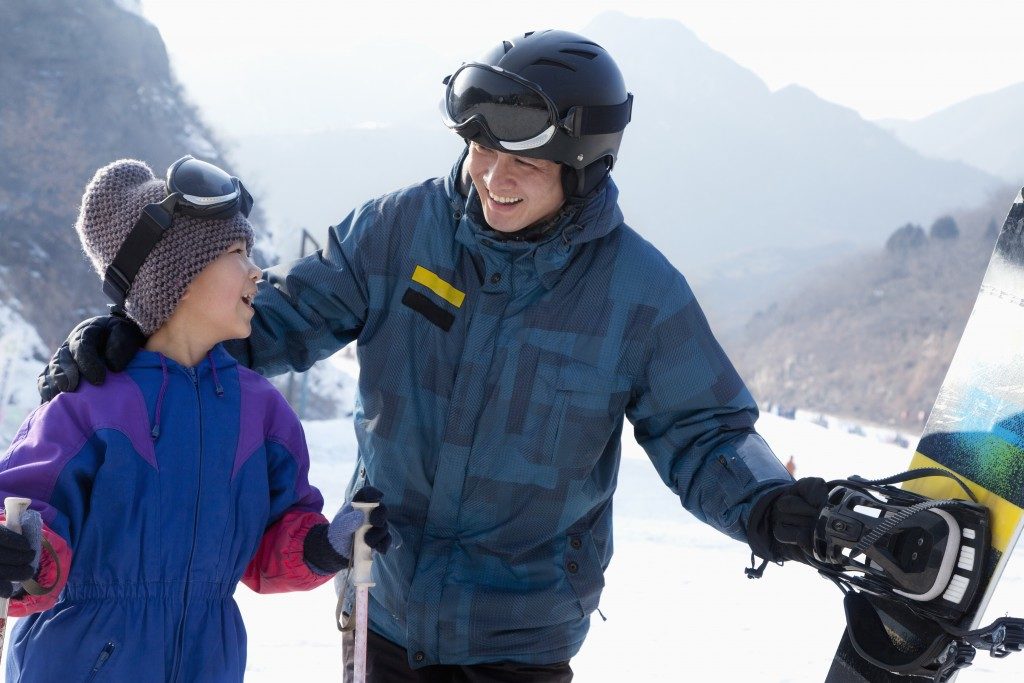Even the most dedicated sports enthusiast can be put off by the cold. When the weather begins to drop, most people prefer to spend their time indoors than brave their way out in the cold. However, doing a little bit of exercise regularly all year long actually provides many health advantages for the body and the mind — and yes, that includes winter.
Exercise is proven to help offset some of the detrimental impacts that cold conditions could have on our energy and mood. If you are considering testing the waters, here are a few pointers to keep you warm and healthy while exercising outside in the cold.
-
Check the weather forecast.
As the weather in winter could be unpredictable, ensure that you stay updated about the latest weather forecasts in your area. The amount of time you’ll be outdoors, as well as the temperature, wind, and moisture, are all crucial factors to consider when preparing a comfortable cold-weather exercise.
The wind chill, which is a key characteristic in winter weather forecasting, is the combination of wind and cold. Extreme conditions will make any outdoor activity dangerous as the wind gets into your clothing and takes away the insulating blanket of warm air that covers you. Thus, you may experience frostbite and other lethal weather injuries.
-
Be aware of the early signs of winter injuries.
One of the things you need to look out for is frostbite. It occurs when the body is exposed to cold temperatures, particularly on uncovered skin areas, such as the cheeks, nose, and ears. In some cases, you may even experience it on your hands and feet. Numbness, tingling, or stinging in the fingertips are early warning signs of this condition. If you suspect frostbite, immediately remove yourself from the cold and apply first aid. If the numbness persists, seek emergency medical attention.
Additionally, stay alert on early warning signs of hypothermia. It’s a condition in which the body temperature is abnormally cold due to its exposure to freezing climates. Hypothermia is more likely to occur while exercising in damp, wet environments and poses more danger to the elderly and young children. Thus, immediate care is imperative. Signs and effects of hypothermia include trembling, convulsing, shivering, loss of balance, and tiredness.
-
Gear up accordingly.
If you’re exercising or doing vigorous activities outside, make sure to wear your protective gear for an added layer of protection. For example, wear shoes with enough traction when snow or ice is present so that you won’t slip and fall. If you are on skis and snowboards, don’t forget to wear proper attire, such as a Bogner ski jacket and pants, helmet, gloves, and goggles. It is also recommended to use heat packs on your hands and feet since they can get cold quickly.
Contrary to popular beliefs, sunburns are likely to occur even in cold weather, so it’s best to apply good lip balms and pack enough sunscreen containing UVA and UVB protection. Put heavily tinted glasses or goggles to protect your eyes from the light reflected by snow and the ice crystals that could injure them.

-
Don’t forget to hydrate.
Drinking enough fluid is just as necessary in the winter as it is in the summer. It is easier to get dehydrated in the cold due to sweating from internal heat, which is tougher to detect because of the cold. Therefore, ensure that you supply yourself with enough water even if you think you aren’t thirsty.
An active lifestyle and some regular physical exercise have been shown to improve our health. These can help you lose weight and prevent coronary heart disease, type 2 diabetes, and stroke, to name a few. It is also linked to improved immune function, thus making it beneficial to one’s well-being.
Additionally, physical activities have also been shown to lessen exhaustion and improve work satisfaction, confidence, self-esteem, and stress control. We can also use exercise to relieve mental health problems, such as depression, anxiety, seasonal anxiety disorder (SAD), and improve our mood. Outdoor fitness also allows for more social contact, which is vital for our health and well-being during the winter. Exercising outside in natural light has also been attributed to improved sleep efficiency, cardiovascular fitness, and overall well-being.
Fortunately, these are all achievable even in the cold. Several options to stay active and busy are available in this season, such as sports, modes of fitness, walking, and even accomplishing daily chores, making it easier to combat seasonal blues. Understand that despite the limited movements brought about by the changes in climate, the vital key here is to alternate sitting with activities or training and exercise outdoors to reap the extra health benefits.
